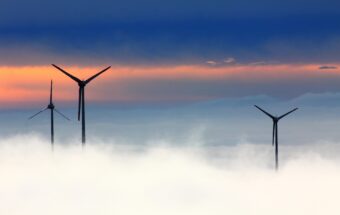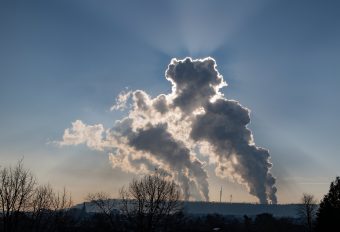
Denmark’s energy and climate ambition in sectors such offshore wind, biomethane and district heating are transforming the country’s energy system and reinforcing its image as a clean energy leader toward net zero emissions by 2050, according to a new in-depth policy review by the IEA.
In 2022, Denmark enjoyed the highest share of wind electricity (54 percent) in the IEA, which together with bioenergy and solar photovoltaics (PV) account for around 80 percent of the power mix. In the same year, almost 40 percent of Denmark’s gas consumption came from biomethane.
While great strides have been made in the energy sector, achieving Denmark’s goal of a 70 percent reduction in greenhouse gas (GHG) emissions by 2030 will require even greater efforts. By the end of the decade, Denmark must achieve in seven years what it managed over the past 30 years in terms of emissions reductions.
According to the new IEA energy policy review, additional measures will be needed most notably in the transport and buildings sectors. The completion of the green tax reform is critical, but should be accompanied by a broad transport decarbonisation strategy and a new vision for energy efficiency, focused on digitalisation, smart cities and buildings. The report offers a detailed evaluation of Denmark’s energy transition in each sector.
Denmark continues to demonstrate great leadership and innovation in the clean energy economy. As the birthplace of the modern offshore wind industry, it is now using that foundation to build an energy system for the future that will offer opportunities for its citizens and businesses on both the domestic and global stage,” said IEA Executive Director Fatih Birol. “At a time of uncertainty for energy markets, the IEA is committed to working with Denmark to achieve its energy transition and security goals.”
More:
- CLEAN TECHNOLOGIES ARE DRIVING JOB GROWTH IN THE ENERGY SECTOR, BUT SKILLS SHORTAGES ARE AN INCREASING CONCERN
- LATIN AMERICA TO PLAY AN ESSENTIAL ROLE IN THE GLOBAL TRANSITION TO A MORE SECURE AND SUSTAINABLE ENERGY SYSTEM
- REMOVING BARRIERS FOR GREEN HYDROGEN DEPLOYMENT
The global energy crisis sparked by Russia’s invasion of Ukraine brought Denmark’s reliance on energy imports into sharp focus, highlighting the need for security of supply, energy diversification and an acceleration of fossil fuel phase out. In 2022, the government proposed to bring forward its climate neutrality target to 2045 and aim for a 110 percent emissions reduction goal by 2050. This increased ambition will require solutions that enable negative emissions in addition to clean energy technologies.
Denmark already has ambitious renewable energy deployment targets. Notably, in the heating sector with an aim to fully replace fossil fuels with biomethane by 2030. There are also plans to increase offshore wind capacity almost eightfold as well as quadrupling onshore wind and solar PV by the same year. Under its Power-to-X (PtX) Strategy of 2021, Denmark is targeting up to 6 GW of hydrogen electrolysis capacity by 2030.
While Denmark has led the way on streamlined permitting for offshore wind, no fast-track process exists for onshore. As such, the IEA report recommends the government review best practices for fast tracking permitting, including a one-stop shop for onshore wind developers with a focus on digitalisation and auction designs to spur further cost reduction.

The report finds that Denmark is well placed to advance the decarbonisation of its economy thanks to regional integration. The North Sea region is a hub for shipping, aviation and industrial clusters and a future centre of demand for low-emissions hydrogen, e-fuels as well as carbon capture utilisation and storage (CCUS). Within only three years, Denmark has created framework conditions and rules for CCUS, completed its first tender and allocated the first CO2 storage licence in addition to agreeing regional hydrogen pipelines. The PtX taskforce is supporting the roll-out of Denmark’s hydrogen and low-emission fuels strategy with more than 30 PtX projects and actions underway.
The Danish government has an important role to play in mitigating supply chain risks, supporting bilateral agreements and the development of rules at the European Union (EU) level. These include the Carbon Border Adjustment Mechanism, rules on the certification of hydrogen and negative emissions, and a framework for CO2 transportation and storage. The IEA report also recommends preparing a green infrastructure master plan at the regional level, as Denmark assumes the Presidency of the North Sea Energy Cooperation in 2024. Such a plan would help to lower cost and de-risk investment. This includes power grids, CO2 and hydrogen networks.
Source: IEA



